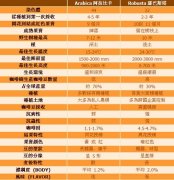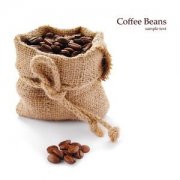Economic value of cultivated Coffee
Coffee is the second largest raw material product after international trade relay oil, and it is also one of the largest tropical food raw materials in the world. Coffee is most commonly used as a drink, and coffee consumption is the largest among the three largest drinks in the world. At present, there are hundreds of kinds of coffee-based foods, which are favored by consumers because of their convenience and nutrition.
Coffee contains starch, lipids, proteins, sugars, caffeine, aromatic substances, natural antidotes and other organic ingredients, so it is widely used in the food industry, such as coffee candy, coffee preserved fruit, coffee ice cream, coffee jelly and so on. In addition to making major drinks and series of foods, caffeine is used as an anesthetic, stimulant and cardiotonic in medicine. In recent years, the New York Blood Center in the United States has also extracted a substance called "cleavage enzyme" from coffee beans, which can convert "B" blood into "O" and expand the new use of coffee. Coffee pulp can still make wine, vinegar, feed and fertilizer, but also can produce a very sticky, non-flammable and impervious sticky glue. In addition, coffee flowers can be used to extract high-grade spices, tannins in coffee fruits and organic acids from coffee residues can be used to make tanning materials. In short, coffee has a wide range of uses not only in the development of a series of food products, but also in medical supplies and industry.
The cultivated coffee has early income and high output value. A small amount of harvest can be obtained 2-3 years after planting, and the harvest period is 20-30 years. The average yield of dried beans is 100kg to 150kg per mu. The output value reached 2500 to 3750 yuan (25 yuan per kilogram of dried beans). The high yield reaches more than 250 kg, and the output value is even higher.
Coffee consumption in the world is high, about three times that of cocoa and four times that of tea. According to statistics, the total world coffee export reached 3.65 million tons in 1976, with an average annual growth rate of 2.2 percent in the 1970s, 4.1 million tons in 1980 and 5 million tons in 1990. At present, China's coffee production not only can not meet the needs of the domestic people, but also can not meet the requirements of buying Chinese-made coffee to some friendly countries. Therefore, the proper development of coffee production is of great significance to implement the policy of diversified economy, increase economic benefits, exchange foreign exchange and meet the needs of the people.
Important Notice :
前街咖啡 FrontStreet Coffee has moved to new addredd:
FrontStreet Coffee Address: 315,Donghua East Road,GuangZhou
Tel:020 38364473
- Prev

Comparison of parameters between Arabica Coffee and Robasta Coffee
Coffee beans are the seeds of Rubiaceae Family plants. There are at least 25 main varieties of Coffea Genus, among which the two most important varieties are Arabica species Coffea arabica (Arabica coffee) and Canafora species Coffea canephora (Robusta coffee), also known as Robasta Coffee. Ah
- Next

Choose healthy drinks. Women should choose the right amount of coffee.
Many of our working women now like to drink coffee, because we drink coffee can help us refresh, but also can let us enjoy the petty bourgeoisie time, but for women's health, drinking coffee for a long time is not good for our health.
Related
- Beginners will see the "Coffee pull flower" guide!
- What is the difference between ice blog purified milk and ordinary milk coffee?
- Why is the Philippines the largest producer of crops in Liberia?
- For coffee extraction, should the fine powder be retained?
- How does extracted espresso fill pressed powder? How much strength does it take to press the powder?
- How to make jasmine cold extract coffee? Is the jasmine + latte good?
- Will this little toy really make the coffee taste better? How does Lily Drip affect coffee extraction?
- Will the action of slapping the filter cup also affect coffee extraction?
- What's the difference between powder-to-water ratio and powder-to-liquid ratio?
- What is the Ethiopian local species? What does it have to do with Heirloom native species?

